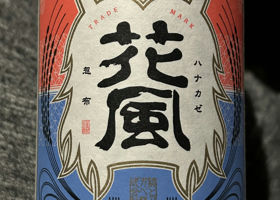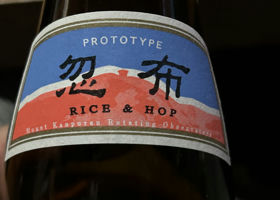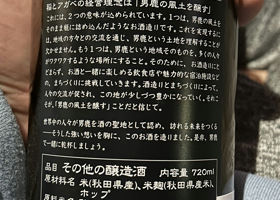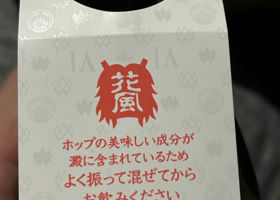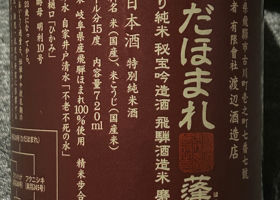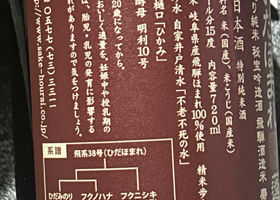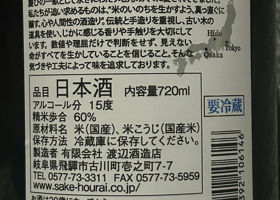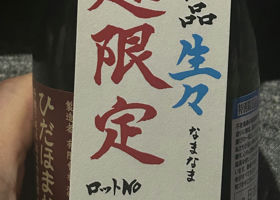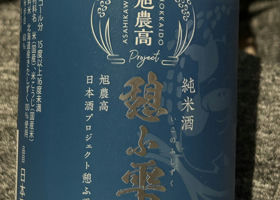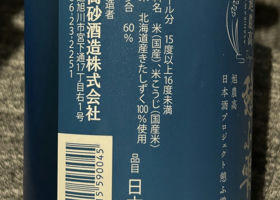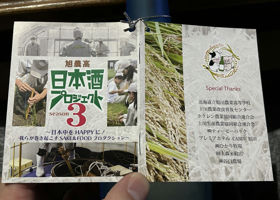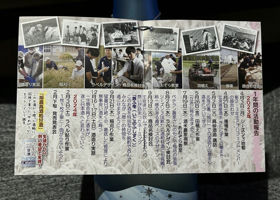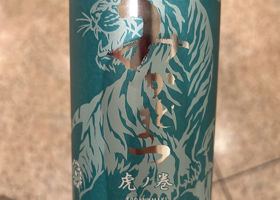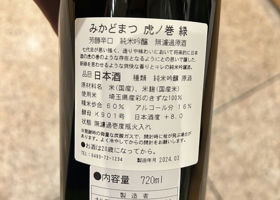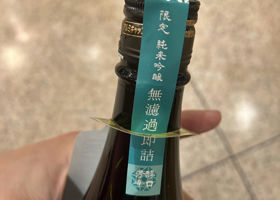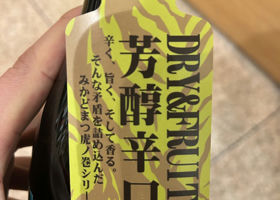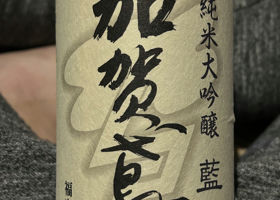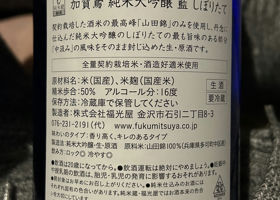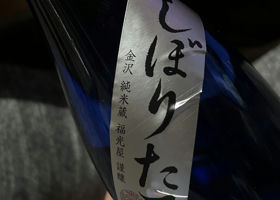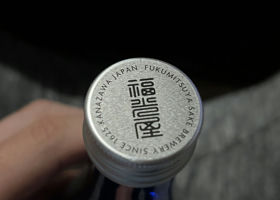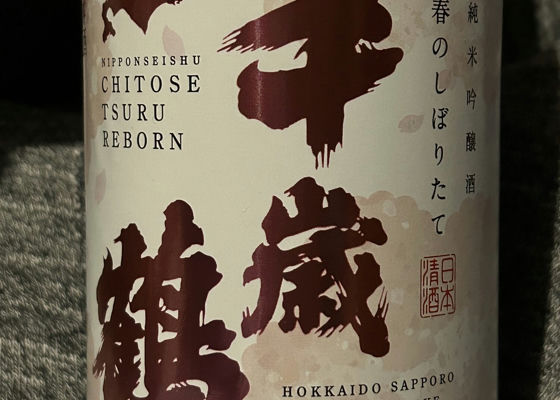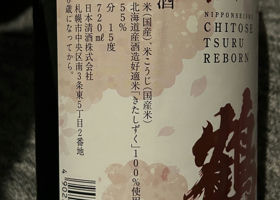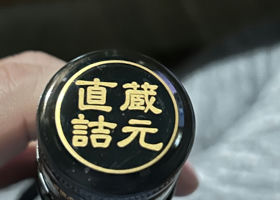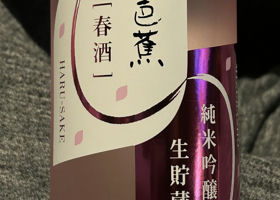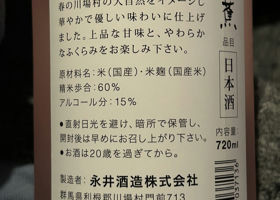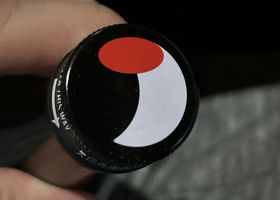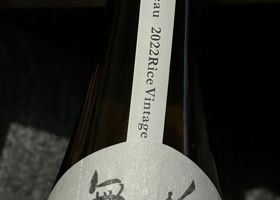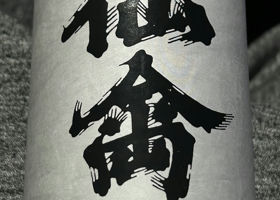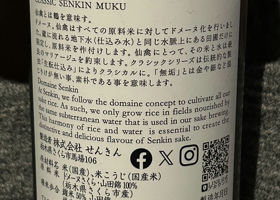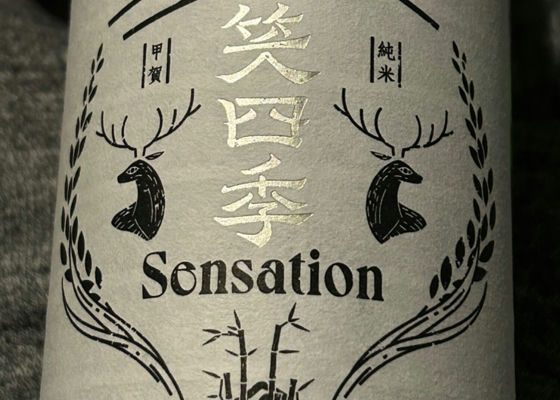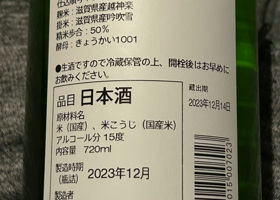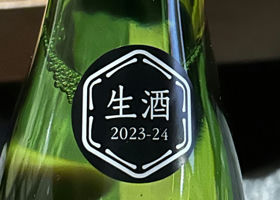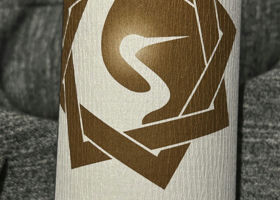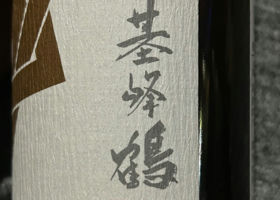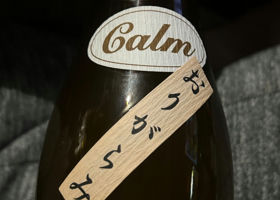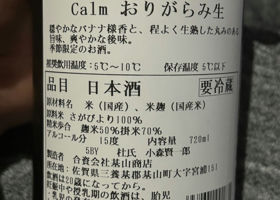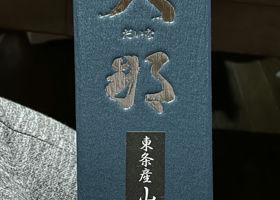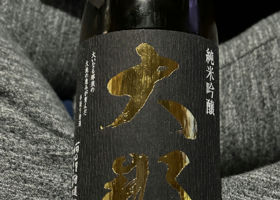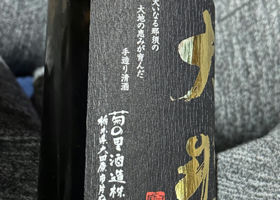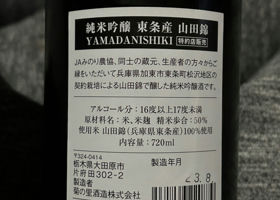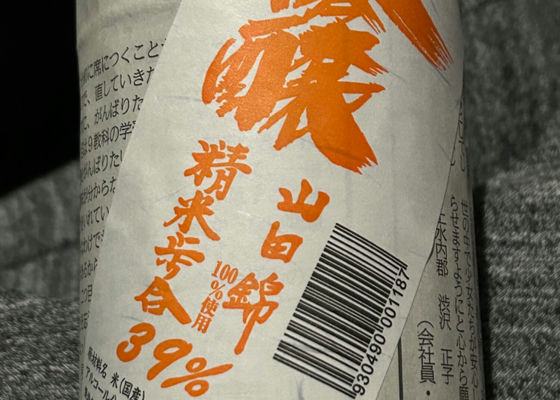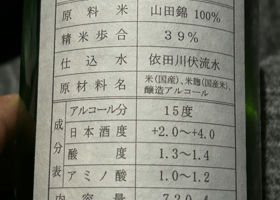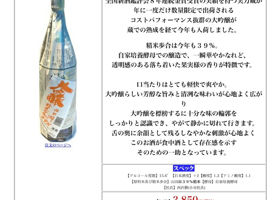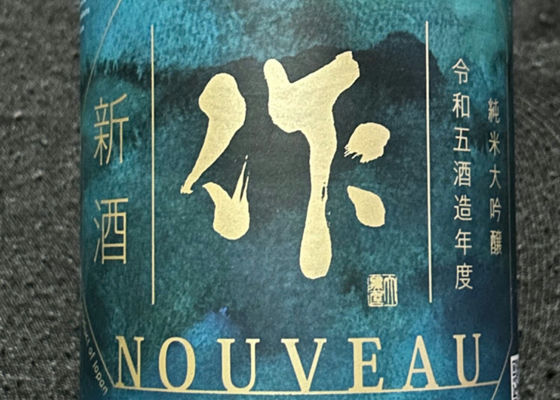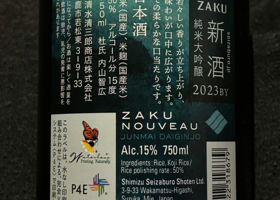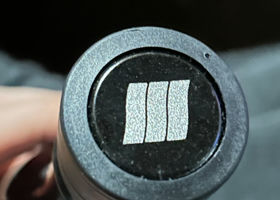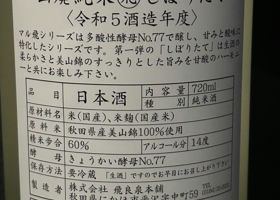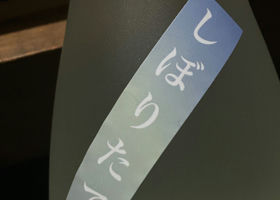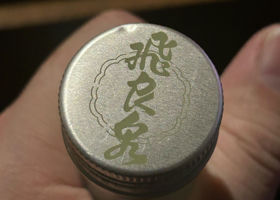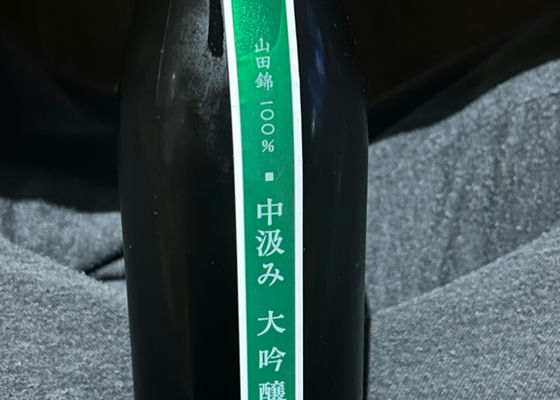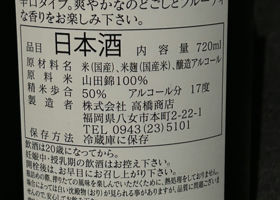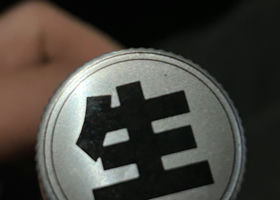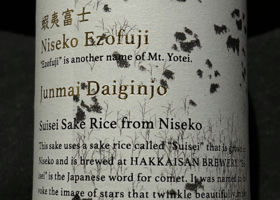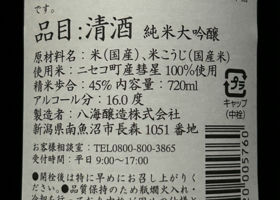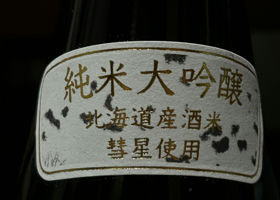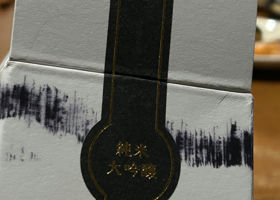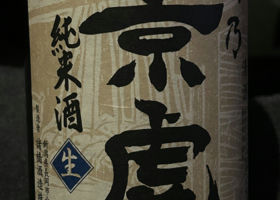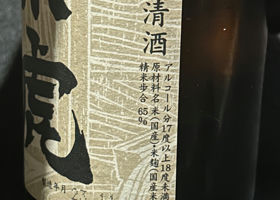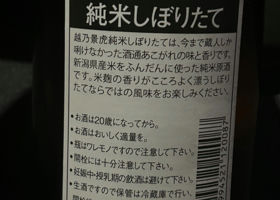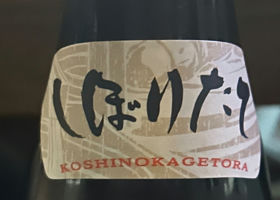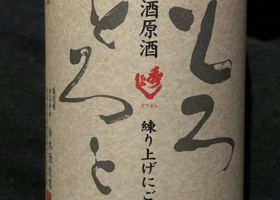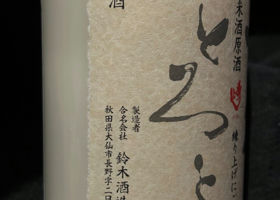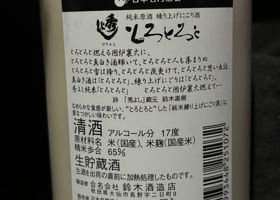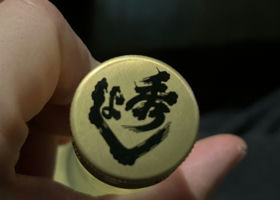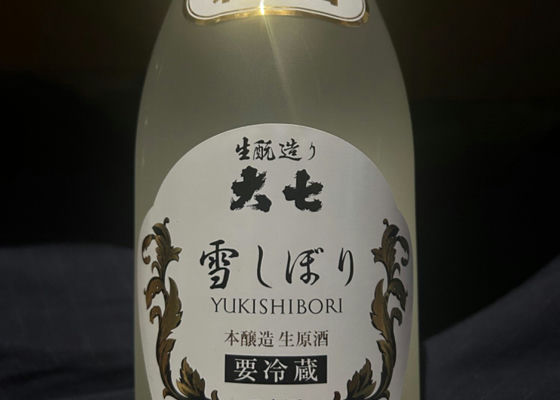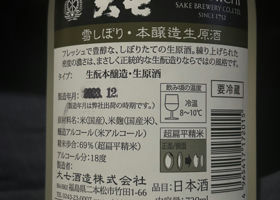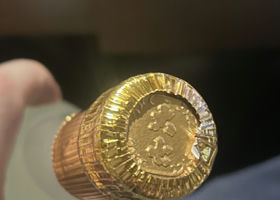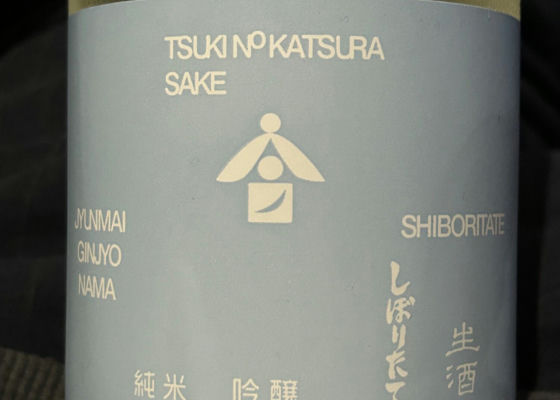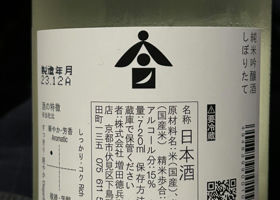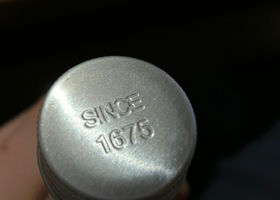Timeline
酔生夢死First of all, the smell is outrageous.
Pop derived? s muscat aroma: ⭕️
It's been a little while since the bottle was opened.
The attack has settled down and the fruitiness is still there.
The fruitiness is still there.
The lingering finish is also fresh and integrated. ⭕️
The aroma through the nose is also mellow.
Ingredients: Akita rice, pop
Rice polishing ratio: 90
Alcohol percentage: 14
Sake Beverage: Other Brewed Sake
We have named our future craft saké Kouzake as opposed to Seishu and Nigorizake. The name "kouzake" is an image of sake and other cultures mingling.
The "Hana" comes from the Japanese name for hops, Western Karakasou. The "wind" comes from the strong winds of Oga, which is the concept behind the craft series. The "KAZE" is derived from the strong winds of Oga, which is the concept behind the Kraft Sake Hanakaze series.
After two years of brewing at the same location, the production process has been streamlined and stabilized, allowing us to lower the price while increasing quality. We plan to sell the very best of Hanakaze and those brewed with special hops at the Rice and Hops location. Horaiひだほまれ 手造り純米秘宝吟造酒 飛騨酒造米 磨き六割特別純米生酒 酔生夢死aroma of freshly cooked rice
Soft mouthfeel
Gentle banana sweetness
Moderate acidity
with exquisite spiciness, bitterness and astringency.
Great sharpness ⭕️
Sad that it only comes once a year.
I would love to have a bottle at home as an evening drink
Such a sake ⭕️
Alcohol content 15 degrees
100% Hida Homare rice produced in Gifu Prefecture
60% polished 744/2828 bottles
Brewing water: "water of immortality" from our own well
Seed: Higuchi "Hikami
Yeast used: Meiri No. 10
Sake degree +1
Acidity 1.1
DINNER Rice Hokke, fried rice, ramen salad, rice
pickles, tofu miso, nishiyama cake 酔生夢死Slightly sweet aroma like white peaches
Moist mouthfeel
Subdued sweetness
Fresh acidity
Overall impression of dryness
The bottle design is also good.
Enjoy it cold with a sip of ⭕️
Rice used: 60% polished rice from Kita-Shizuku, Hokkaido
Sake meter / +3, Acidity / 1.6
Alcohol / 15
This is a project sake made over the course of a year with the students of Asahikawa Agricultural High School (rice paddy group), who will become the next generation of sake producers.
We hope that everyone will enjoy this sake on special occasions or with a glass of sake in the evening. The theme of the project is "I hope everyone will have a relaxing time drinking this sake on special occasions and in the evening. Personally, when I think of Takasago Shuzo, I think of "Ichiyashizuku. Maybe it's just a coincidence, but I think it's an awesome name: ⭕️ 酔生夢死Slightly citrusy aroma typical of No. 9
Piquant mouthfeel
Fresh white peach-like sweetness
Fresh acidity with fruitiness: ⭕️
Moderate saltiness and astringency
Good sharpness
Better balance than before the renewal.
Especially the aftertaste is refined. ⭕️
Looking forward to the future!
Rice used: 100% Sai-no-Kizuna from Saitama Prefecture
Polishing ratio 60%, alcohol 16
Yeast k901, Sake meter value +8.0 酔生夢死Aroma of koji that spreads quickly
Smooth mouthfeel
Moderate sweetness
from moderate acidity
Saltiness and astringency from moderate acidity
and astringency spread in good balance.
It is a bit stiff, but
but it is a bottle overflowing with dignity and delicacy.
All of the rice used is contract-grown rice and specially cultivated rice.
100% Yamadanishiki (produced in Naka-ku, Taka-machi, Hyogo Prefecture)
Polishing ratio 50%.
Production method: Junmai Daiginjyo, Nama Nama-shu
Alcohol level 16%.
Sake degree +5
Acidity 1.5
Amino acidity 1.2 酔生夢死Soft aroma, mouthfeel ⭕️
Anyway, gentle sweet and sour ⭕️
Just like the label color
Taste of warmth
Exquisite astringency
A subtle astringency rounds out the aftertaste.
The concept and the balance of flavors are well balanced. ⭕️
Kitashizuku, Hokkaido's preferred sake brewing rice
Polishing ratio 55%, Alcohol 15
Sake degree -1.5, Acidity 1.6
Brewed in a new sake brewery rebuilt last year for the first time in 64 years, this product is limited to 2,000 bottles. 酔生夢死Slight standing aroma
Moist mouthfeel
Gentle and pleasant sweetness, just like the bottle design
Gentle and pleasant sweetness: ⭕️
Fresh and refreshing acidity and a lingering bitterness
The lingering bitterness is also reminiscent of spring. ⭕️
The subtle aroma is pleasantly floral.
It is modest and pleasing to the eye. ⭕️
Rice: Gohyakumangoku from Gunma Prefecture
Rice polishing ratio: 60
Alcohol content: 15%.
Sake Degree: -2
Acidity: 1.5
The key point is that Gohyakumangoku rice is used instead of the usual Yamadanishiki used in the Basho series. The concept of "terroir" is the key concept behind this sake: "Sake made from rice harvested by contract farmers in the brewery's surrounding area (Kawaba Village) is also called "skunk cabbage. 酔生夢死mild banana aroma
Piquant mouthfeel
Elegant sweetness
Fine and moderate, great acidity ⭕️
Very light aftertaste
Sentori is still great!
Personally, I prefer classic to modern ⭕️
Ingredients: 50% Domaine Sakura Yamadanishiki (Sakura City, Tochigi Prefecture)
Kake Rice: 60% Yamadanishiki (Domaine Sakura, Sakura City, Tochigi Prefecture)
Alcohol 15%.
Sake meter degree -3
Acidity 2.0
Yeast used: Tochigi Prefecture yeast
Kinugawa River subsoil water EmishikiSensation White」New Gen 古式生もと 2023-24純米生酛原酒生酒 酔生夢死Ripe banana aroma⭕️
Moist mouthfeel
Fresh sweetness
Moderate acidity but with a core
Pleasant astringency
Tangy and pungent
The impression of the four seasons is completely different
Transparency and delicacy: ⭕️
A little later, sweetness at about 15 degrees.
My best ⭕️
The spiciness softens and lingers for a long time⭕️
From this season, in order to establish our own identity, we have reviewed the yeast used and the design, and will once again advocate the "supremacy of sweetness". Previously positioned as a stand-alone product, it is now positioned as an entry model that allows people to easily taste and rediscover the unique flavors of Sho Shiki, including Junmai brewing, Kimoto-type yeast, and our own yeast." (From the brewer's product description) (From the brewer's product description)
Rice: Ginfukiyuki from Shiga Prefecture, 50% polished rice
Yeast: Kyokai 1001 Alcohol: 15 酔生夢死Very beautiful cage
Pale white
Tropical fruit aroma, mango ⭕️
Tangy mouthfeel
Not too sweet.
Creamy flavor
Firm bitterness
Dry tasting food wine
2nd to 4th day after opening the bottle
The gaseous sensation has calmed down.
Great sweetness ⭕️
Personally, I prefer the latter half of the bottle.
You can enjoy it for a long time.
A bit of a bargain!
Check out Kihotsuru: ‼️
Renewal product: ⭕️
Alcohol content: 15%.
Sake degree: +3 Acidity: 2.1
Rice: Sagabiyori
Rice polishing ratio: 50/70
Calm
→Calm, peaceful, quiet; calm, cool 酔生夢死Mellow, apple-like scent of gin
Soft mouthfeel
Elegant sweetness and delicate acidity
Long aftertaste with just the right amount of umami
It is a good sake after all!
This is the royal road: ⭕️
Rice: Yamadanishiki produced in Tojo, Hyogo Prefecture ■Polishing ratio: 50% ■Alcohol level: 16% ■Sake meter: +1.0 ■Acidity: 1.5
Yeast: 1401 + M310 酔生夢死More floral than fruit
Elegant scent of gin
Glossy mouthfeel
Delicate sweetness characteristic of Yamadanishiki. ⭕️
Low acidity
This year's is very light.
Great sharpness: ⭕️
Enjoyed every year!
Rice used: Yamadanishiki
Rice polishing ratio: 39
Sake meter: +3
Acidity: 1.3
Amino acidity: 1.1
Alcohol percentage: 15
Home-brewed yeast 酔生夢死Aroma of rice more subdued than expected
The scent of gin is very slight.
Glossy mouthfeel
Fine and fresh sweetness: ⭕️
Beautiful aftertaste from the clean acidity: ⭕️
Quintessential perfection!
You can drink it all the time.
After a little while, it has a refined aroma like white peaches.
Creamy flavor gradually develops.
Raw material rice Domestic rice
Polishing ratio 50%.
Alcohol 15%.
The label design for new Saku sake changes every year. This year's label is inspired by the deep fermentation process that goes into the making of sake and the breath of life.
The labels were printed using the P4E System, a VOC-free printing technology promoted by Toray Industries, Inc. that uses waterless printing. The label contributed to the achievement of the SDGs, including CO2 reduction and improvement of the working environment, albeit in a small way. 酔生夢死Gentle pineapple aroma
Tangy mouthfeel
Gentle sweetness
Fruity acidity
Slight citrus bitterness
The lingering finish is endlessly fresh. ⭕️
I'm looking forward to another year of Hiraizumi: ‼️
Rice: Miyamanishiki (produced in Akita Prefecture)
Polishing ratio: 60
Sake meter: -18
Acidity: 3.1
Alcohol content: 14
Kyokai 77 yeast
→ A highly acidic yeast with high malic acid production. It has high acidity but low succinic acid, and malic acid accounts for about 70% of all organic acids. It is highly productive of ethyl caproate and suitable for high acidity sake, sake with increased fermentation, noble sake, long-aged sake, and low-concentration sake. wiki
The brewery has been "making all of its sake using Yamahai brewing method" since R05BY. 酔生夢死100% Yamadanishiki produced in Itoshima, Fukuoka
Polishing ratio 50%.
Alcohol content 17
Sake degree +3 to +5
Aromatic scent of ripe apples
Glossy mouthfeel
Elegant sweetness
Delicate acidity, moderate astringency
Good sharpness, with a hint of white gem
Dignity and sharpness
It is especially absorbing during a meal. ⭕️ 酔生夢死Niseko Distillery, a whisky distillery in Niseko Town, Hokkaido, will open in 2021 as a group company of Hakkai Brewery Co. This is a limited edition sake produced at the request of Niseko Town in connection with the opening of the Niseko distillery.
Comet is characterized by its low protein content. It produces a light-flavored sake. It is a large grape variety with a heavy 1,000-grain weight and high yield potential. A cross between "Hatsushizuku" and "Ginpu". Hatsushizuku" is the first rice suitable for sake brewing in Hokkaido, and "Ginpu" has "Hachitan-nishiki" as its parent, which is produced in Hiroshima Prefecture.
Alcohol content: 16%.
Rice: Niseko Comet
Polishing ratio: 45
Refreshing white peach aroma
Flat mouthfeel
Refreshing acidity like fresh green leaves
Moderate sweetness
Slightly umami at the end
Beautiful lingering aftertaste that can be said to be typical of Hakkaisan 酔生夢死Alcohol content: 17
Sake meter: +3
Acidity: 1.7
Rice: Gohyakumangoku, Koshibuki
Rice polishing ratio: 65
Brewing water: ultra soft water
Soft attack that is typical of Keitora
Juicy sweetness, fuller than expected
Fresh acidity, beautiful aftertaste
The initial aroma is mild, but it has a mellow and
but it has a mellow and flamboyant overtone. 酔生夢死Alcohol percentage 17.0-17.9
Sake meter degree -14.0
Acidity 2.1
Amino acidity 1.0
Rice used: Menkoina
Rice polishing ratio 65
Yeast: AKITA Yukiguni Yeast (UT-2)
→ Little degradation of flavor with aging
Sake mother: Fast brewing
Moromi is coarsely filtered through a coarse mesh and then finely ground with a mixer.
New Year's flavor? Aroma of rice cake
Love the mouthfeel as the sake name suggests: ⭕️
Calpis flavor is present but
But the sweetness is moderate.
The alcohol content is also strong, just like the original sake.
The aftertaste is very pleasant.
I think it's because of the excellent kneading: ⭕️ 酔生夢死Alcohol 18%.
Sake degree +2
Acidity 1.4
Amino acidity 1.4
Rice used: Chiyonishiki, others (Fukushima), Gohyakumangoku (Toyama, Fukushima)
Polishing ratio (Kake rice, Koji rice) 69%, 65% (Super flat rice polishing)
Yeast In-house yeast
Calm aroma of rice
Firm acidity
Umami with depth
The alcohol content gives a sense of volume.
It is also delicious lukewarm.
3rd day
Delicious!
The acidity and the alcohol feel has calmed down.
Exquisite, well-balanced to my liking!
Nama yeast yeast, and the sharpness of the alcohydrate. ⭕️
Excellent! 酔生夢死Alcohol 15%.
Sake degree +2
Acidity 1.8
Amino acidity 1.0
Rice used: Gohyakumangoku (Kyoto)
Polishing ratio (Kake rice, Koji rice) 55%, 55
Yeast Kyoto yeast
Refreshing citrus aroma
Gentle mouthfeel
Light and elegant taste like feathers
The acidity is not as strong as the acidity, which is a wonder.
The oldest brewery in Fushimi: ⭕️ RecommendedContentsSectionView.title
